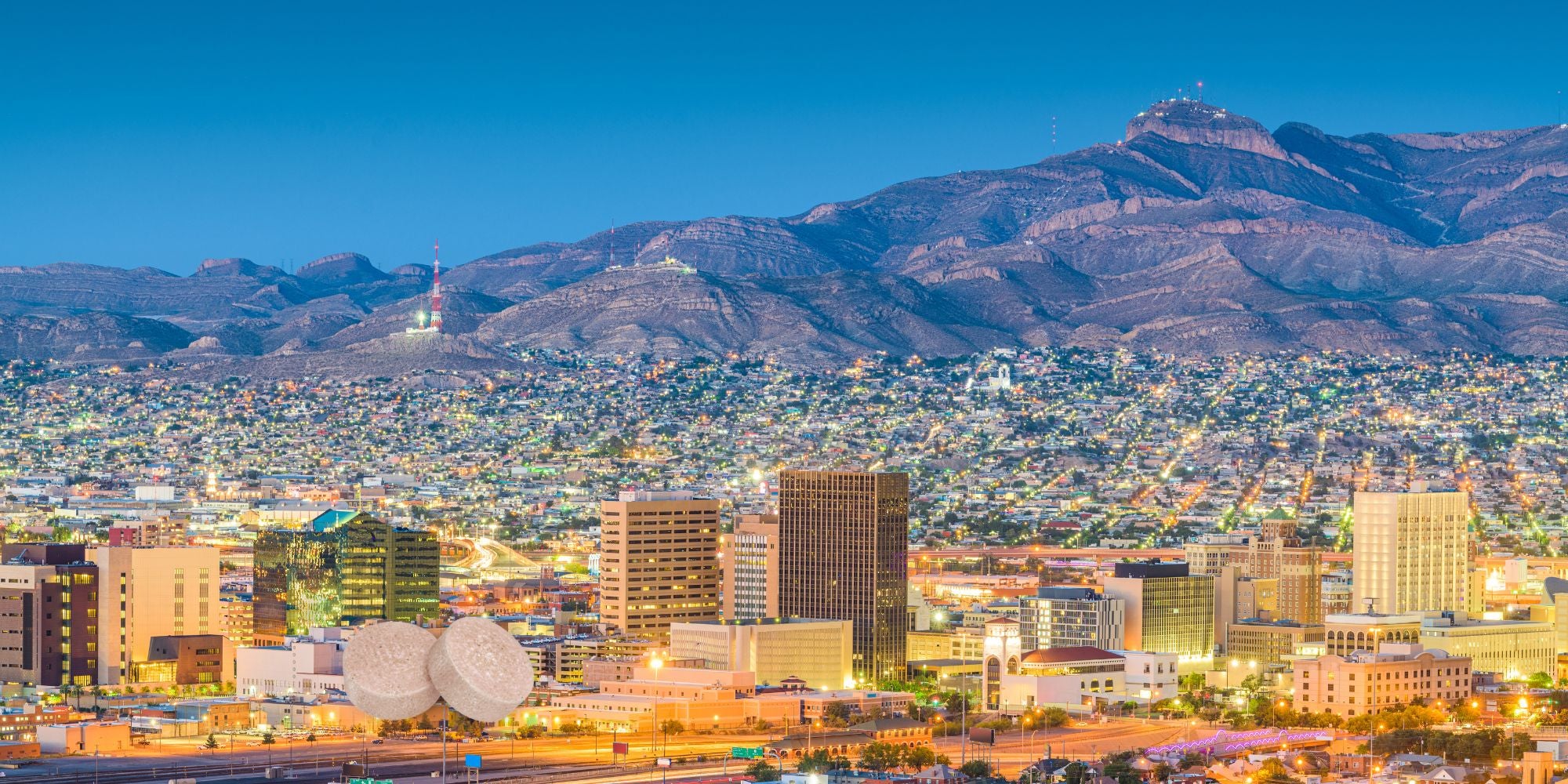
If you're planning to visit El Paso, the 6th largest city in Texas, you'll go up in altitude upon arrival. In this guide we'll review everything you need to know about El Paso altitude and five tips how to avoid El Paso altitude sickness.
El Paso altitude sits at 3,740 feet high above sea level. Surrounded by the Chihuahuan Desert, El Paso is south of the Rocky Mountains in the Franklin Mountains.
As an a city in the far western part of Texas, El Paso is situated along the Rio Grande River across from the city of Juarez, Mexico. Overall, El Paso offers a unique blend of history, culture, natural beauty, and modern amenities, making it a vibrant and dynamic city in the American Southwest.
In addition to its cultural offerings such as historic sites and museums, El Paso is also known for its natural beauty and outdoor recreation opportunities. The city is surrounded by scenic mountain ranges, including the Franklin Mountains, which offer hiking and biking trails, rock climbing, and other outdoor activities. The nearby Hueco Tanks is also a popular destination for rock climbing and camping.
El Paso is far from the highest altitude in the area, the many mountains nearby or a short drive away go much higher in elevation.
High-altitude areas near El Paso:
Whether visiting El Paso or one of its surrounding mountains, you should be prepared for altitude sickness.
Yes, you can have a small risk of altitude sickness in El Paso.
El Paso is at a higher altitude than many other cities, and it's possible to get altitude sickness mainly for travelers coming from sea level. Although El Paso altitude sickness symptoms would be mild at worse as it's slightly lower than Denver, your chances will significantly go up if you're going north into the Franklin Mountains up to 7,192 feet.
Altitude sickness usually starts at around 5,000 feet high,¹⁵ but signs show it can lower and the data on Denver visitors getting altitude sickness is common.
Anecdotal evidence of mild altitude sickness such as this one person that moved to El Paso who said "I moved here (sea level). I'm out of breath. I took about 3 months to get used to it."⁸
El Paso altitude sickness, or acute mountain sickness, is the result of lower oxygen levels causing physiological stress on the body. In addition, being a desert the weather in El Paso is extremely, similar to Colorado and Arizona.
The combination of lower oxygen (hypoxia) and dry weather can lead to altitude sickness symptoms including fatigue and headache. The higher you go, like the the Franklin Mountains, the higher your risk gets and more symptoms that are possible.
El Paso altitude sickness symptoms may include:
Symptoms of altitude sickness in El Paso or the nearby mountains can develop within 6-24 hours. Take precautions to avoid altitude sickness and be alert for any symptoms you feel.
When you visit El Paso or the Franklin Mountains, you'll want to be best prepared to avoid any mild or moderate altitude sickness.
As a company based in Colorado, we have loads of experience and research on altitude sickness that we'll share, and help you avoid El Paso altitude sickness.
Here's 5 tips to avoid El Paso altitude sickness:
In conclusion, follow these top tips for the best chance at avoiding El Paso altitude sickness — including drinking plenty of water, taking it easy, optimizing your sleep, avoiding alcohol, and supplementing antioxidants.

Zaca is a healthy, great tasting chewable which assists the body to rehydrate and recover. Whether hiking, traveling or exercising — these fast-acting chewables can enhance your performance. Fortified with glutathione for antioxidants, and other herbs and amino acids to replenish your body. Made in on-the-go packets to take anywhere, simply eat 2-4 chewables a day or when needed. Try Zaca chewable tablets today and fuel your body better.
SOURCES
1. El Paso Texas Altitude
https://en.wikipedia.org/wiki/El_Paso,_Texas
2. Guadalupe Peak Elevation
https://en.wikipedia.org/wiki/Guadalupe_Peak
3. Guadalupe Mountains National Park Elevation
https://en.wikipedia.org/wiki/Guadalupe_Mountains_National_Park
4. Davis Mountains Elevation
https://en.wikipedia.org/wiki/Davis_Mountains
5. Big Bend National Park Elevation
https://en.wikipedia.org/wiki/Big_Bend_National_Park
6. Effects of high altitude on humans
https://en.wikipedia.org/wiki/Effects_of_high_altitude_on_humans
7. Oxygen Levels at Altitude
https://wildsafe.org/resources/ask-the-experts/altitude-safety-101/oxygen-levels/
8 Should Out-Of-Towners Be Concerned With El Pasos Altitude
https://klaq.com/should-out-of-towners-be-concerned-with-el-pasos-altitude/
9. Why Do You Need to Drink a Lot of Water at a High Altitude?
https://www.livestrong.com/article/360485-how-to-train-for-high-altitude-hiking
10. Sleep: The Secret Ingredient of Injury Recovery
https://www.orthocarolina.com/media/sleep-the-secret-ingredient-of-injury-recovery
11. Effects of Alcohol
https://www.ahajournals.org/doi/full/10.1161/01.HYP.29.6.1278#
12. High altitude and oxidative stress
https://pubmed.ncbi.nlm.nih.gov/17482529/
13. Effect of high altitude (7,620 m) exposure on glutathione
https://pubmed.ncbi.nlm.nih.gov/11320641/
14. Oxidative Stress and Diseases Associated with High-Altitude Exposure
https://www.ncbi.nlm.nih.gov/pmc/articles/PMC8868315/
15. Patient education: High-altitude illness (including mountain sickness)
https://www.uptodate.com/contents/high-altitude-illness-including-mountain-sickness-beyond-the-basics
Copy the coupon code & use it at checkout